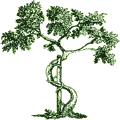
|
|||||||
Arthrogryposis
Arthrogryposis translated from the Greek literally means "curved or hooked joints." Hence, this term is used to describe multiple joint contractures present at birth. There are many causes for congenital multiple joint contractures, and could be due to abnormal nerve or muscle development in the womb. However, the commonest form of arthrogryposis, present in 40% of cases, is a condition called amyoplasia.
What causes it?
The cause of arthrogryposis is varied, and not entirely understood. Certainly, in many cases, abnormal nerve, muscle and connective tissue development is involved. Lack of movement of intrauterine movement is also responsible, as in oligohydramnios. Genetic factors do play a part in many cases, as do environmental factors like drugs. Incidence of arthrogryposis is one in 3,000 live births.
What are the symptoms?
The child is born with multiple joint contractures in all limbs. In the commonest form of arthrogryposis, called amyoplasia, the typical deformities are often severe and symmetrical, as follows:
| shoulder | -- | internal rotation deformity |
| elbow | -- | extension and pronation deformity |
| wrist | -- | volar and ulnar deformity |
| hand | -- | fingers in fixed flexion, and thumb-in-palm deformity |
| hip | -- | flexed, abducted and externally rotated, often dislocated |
| knee | -- | flexion deformity |
| foot | -- | clubfoot deformity |
In the typical child with amyoplasia, intelligence is normal, and sensation is intact.
What does your doctor do about it?
Treatment of arthrogryposis is a challenging problem. It should not be undertaken by any one doctor, but by a multi-disciplinary team, including the pediatrician, neurologist, orthopedic surgeon, geneticist, physical and occupational therapist. The aim of treatment is to improve function, not cosmesis. Therapy and bracing is always attempted prior to any consideration of surgical correction.
What is the prognosis?
In a child with normal intelligence, with appropriate treatment, independent ambulation and function can be expected.
NOTICE: The information presented is for your information only, and not a substitute for the medical advice of a qualified physician. Neither the author nor the publisher will be responsible for any harm or injury resulting from interpretations of the materials in this article.
Questions
or comments? Post your thoughts in the Orthoseek
Message Forum!
Find a pediatric orthopedic surgeon
in an area near you.
Home | About Us | Orthopaedic Topics | Message Forum
![]()
Comments, questions, or suggestions are welcome. Please
contact us using this form.